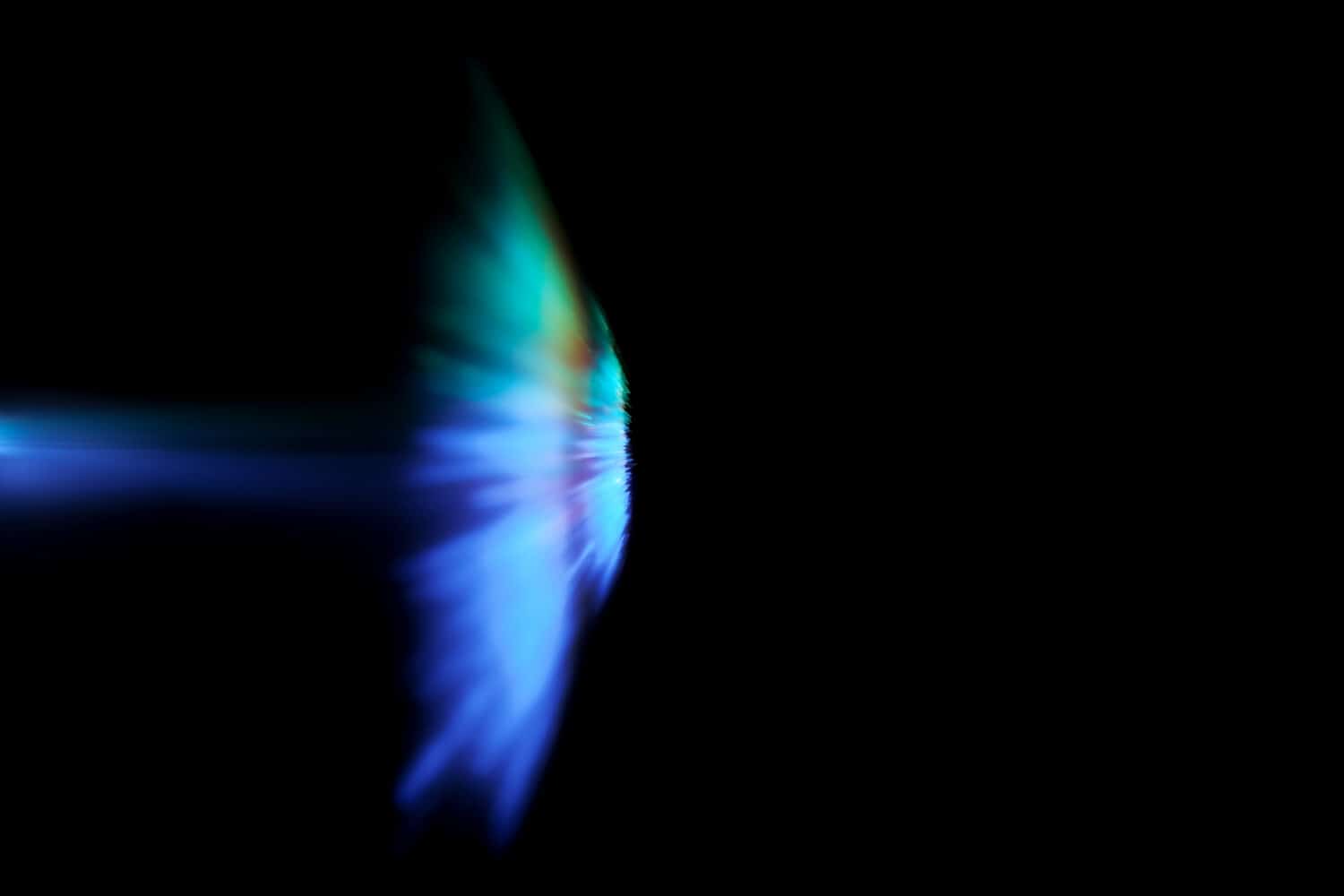How fast is Mach 7? Blindingly fast. Mach is a measure of speed; it’s all about how quickly something can go compared to the speed of sound. If something is going at Mach 1, it’s traveling exactly as fast as sound. And if something is going Mach 7, watch out because it’s going seven times the speed of sound. To give you a little perspective, this is over three times faster than the fastest bullet in the world. Follow along as we delve into how fast Mach 7 is and advancements in aircraft and beyond to reach this speed.
How Fast Is Mach 7?

Mach 7 breaks the sound barrier at seven times the speed of sound.
©Roberto Sorin/Shutterstock.com
Mach 7 is seven times the speed of sound, which is approximately 760 mph. If we multiply the speed of sound by seven, we get 5,320 mph, which is about how fast Mach 7 can be. It’s important to note that the speed of sound varies based on environmental factors such as temperature, air conditions, and location. At sea level, with the right temperature and air conditions, the speed of sound is 760 mph.
Has Anything Reached Mach 7?
Has anything reached Mach 7? Almost. NASA’s X-43A successfully achieved speeds of Mach 6.83, setting a world speed record for air-breathing, non-rocket aircraft. NASA’s X-43A is a high-speed engine known as a “scramjet.” Scramjet technology opens doors for various aerospace applications, including launching satellites and high-speed cruise missiles. The jet’s engine can potentially propel an aircraft at Mach 10 (approximately 7,200 mph or 10 times the speed of sound).
The X-43A’s scramjet engine works by igniting fuel in the air and traveling at supersonic speeds, a challenging feat. The jet offers significant weight savings by taking oxygen from the atmosphere, making them highly attractive for various aerospace applications.
Can Anything Go Mach 6?
Yes, it’s possible to reach Mach 6. The North American X-15 had a top speed of Mach 6.70. This remarkable aircraft was a joint project involving the U.S. Air Force, Navy, and NASA. The rocket-powered research aircraft played a major role in bridging the gap between flight within the atmosphere and flight beyond the atmosphere into space. Capable of reaching approximately 67 miles high, the X-15 was powered by the XLR99 rocket engine, with over half a million horsepower.
Throughout its operational life from 1959 to 1968, it completed an impressive 199 flights. In 1961, Major Robert M. White, U.S. Air Force, became the first pilot to fly faster than Mach 6 when he flew to Mach 6.04. Then in 1967, Air Force Major William “Pete” Knight earned the craft the title of the “fastest airplane ever flown, reaching Mach 6.72. That’s 4,520 mph.
Is It Possible to Reach Mach 12?
Is there anything that can reach Mach 12? Not yet, but there is something in the works. The Dart AE Hypersonic Jet is an unmanned, lightweight aircraft design. This small craft measures 9.8 feet long and only weighs 660 pounds. It’ll be the first hypersonic airframe entirely 3-D printed. Specifically built for hypersonic flight, it aims to travel at astonishing velocities, nearly 10 times faster than a Boeing 737. An advanced propulsion system, a hydrogen scramjet, will power the Dart AE. Hypersonic claims that the hydrogen scramjet technology can push the Dart AE to reach Mach 12, an astounding 9,175 miles per hour.
What Are Supersonic Speeds?

Supersonic speeds are speeds that exceed the speed of sound.
©Andrey Yurlov/Shutterstock.com
Mach 7 is a supersonic speed because it exceeds the speed of sound, which is over 700 mph. For aircraft, the journey of supersonic speeds began with the Bell X-1. The rocket-powered research plane was the first to achieve this feat. Designed to break the sound barrier, the X-1 was contracted in 1945 by the U.S. Army Air Forces in conjunction with the National Advisory Committee for Aeronautics (NACA). The X-1, under the control of Captain Chuck Yeager, triumphantly broke the sound barrier on October 14, 1947, reaching Mach 1.06 (approximately 807 mph). This began the supersonic flight era and significantly influenced the development of high-speed military aircraft.
Can a Bullet Travel at Supersonic Speeds?

There are bullets that can travel supersonic speeds, just passing Mach 1.
©Payless Images/Shutterstock.com
Yes, bullets can travel at supersonic speeds, but just barely. There are bullets that can break the sound barrier just passing Mach 1. However, a lot of bullets go much slower. Looking forward, futuristic bullets are promising to surpass these speeds far. Military technology is making some incredible strides. They’re currently working on cutting-edge bullets that can reach Mach 6. These impressive speeds are thanks to electromagnetic railguns and lasers.
Can Cars Travel at Supersonic Speeds?

There is a record of a car breaking the sound barrier with a speed of Mach 1.016.
©jamesteohart/Shutterstock.com
Cars can reach supersonic speeds too. There is a record of a car breaking the sound barrier with a speed of Mach 1.016. In 1997, UK driver Andy Green made history in the Black Rock Desert of Nevada by setting this new land speed record. The car he drove was the insanely fast Thrust SSC. Behind the wheel of the jet-powered car, he achieved an astonishing speed of 763.035 mph over one mile.
Thank you for reading! Have some feedback for us? Contact the AZ Animals editorial team.








